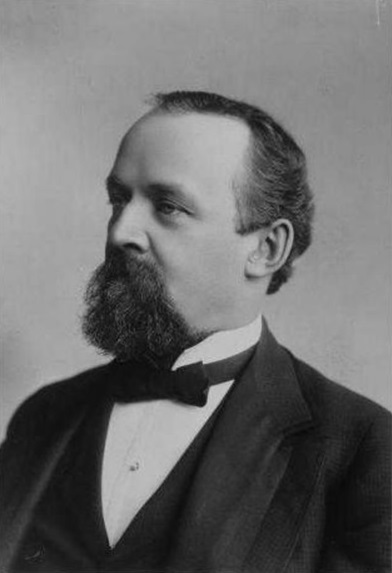Charles Pillsbury (Charles Arthur Pillsbury)

Charles Pillsbury was drawn to business in Minneapolis after experiencing and observing the commercial interests in Montreal, which processed grain from the west. Pillsbury’s uncle, John S. Pillsbury, had settled at the Falls of St. Anthony at Minneapolis in 1855; in 1869, Charles Pillsbury moved to the growing city of Mineapolis and established his flour business. At that time of Pillsbury’s arrival, four or five flour mills, deriving their power from the Falls, were small in size and ground their grain with large buhr stones. Pillsbury was employed by his uncle and soon gained part-ownership in his own mill. Mr. Pillsbury made a close and thorough study of the methods of flour milling and contemplated better results through the industry’s innovative practices in flour processing. At his own mill, Pillsbury discarded the buhr stones, and introduced and improved on the newer practices. He competed with Cadwallader C. Washburn and the Washburn family, Mr. Christian, and other millers in the production of what was called “new process” flour. Charles Pillsbury created the brand “Pillsbury’s Best.” It was claimed that “Pillsbury’s Best” was the finest flour in the world, and its production techniques allowed Pillsbury to capture the market demanding high-quality flour. The use of a series of carefully gauged steel rolls milling grain into flour effected a revolution in the large flour mills in the US, as it was efficient and produced excellent quality. It led to important changes in wheat growing, because it created a demand for hard “spring wheat”, which had, up to that point, was less desirable than the softer winter wheat of the South.
In 1872, Mr. Pillsbury persuaded his father and his uncle to join him in an expansion of the business and the firm of Charles A. Pillsbury & Co. entered upon a career of remarkable enterprise. A brother, Frederick C. Pillsbury, came into the firm at a later date. The company’s history in flour milling became synonymous with the history of the industry. Minneapolis became one of the largest markets for grain in the world. The care, thoroughness and soundness of Charles Pillsbury’s business practices gave the Pillsbury mill a foremost position in flour manufacturing in the United States. Later, four new mills were added to the original plant, either by purchase or lease, including the Pillsbury “B”, Empire, Excelsior and Anchor mills, and each of the new properties was rebuilt and equipped with the most modern equipment. To ensure an ample supply of the finest wheat, the firm brought into being the Millers’ Association, whose agents inspected and purchased only the finest grain in the Northwest. A system of grain elevators for storage and shipment was created, under the ownership of the Minneapolis & Northern Elevator Co., of which Mr. Pillsbury was president. The warehouses and elevators of this firm are still extant near the Mississippi riverfront in Minneapolis. The final step in the extension of the business of the firm was the construction of the huge Pillsbury “A” Mill. In preparation for this expansion, Pillsbury had observed flour mills in Europe, including those of Budapest, Hungary, which had the reputation of production of the finest flour in the “old world”. The Pillsbury “A” Mill, built in 1882, was the pride of the firm, with a capacity of 5,000 barrels of flour a day, later increased to 10,000 barrels. Production later increased to 24,500 barrels of flour a day, and the brands became known worldwide. Charles Pillsbury died suddenly on September 17, 1899 from a heart ailment.
Born
- December, 03, 1842
- USA
- Warner, New Hampshire
Died
- September, 17, 1899
- USA
- Minneapolis, Minnesota
Cemetery
- Lakewood Cemetery
- Minneapolis, MInnesota
- USA



